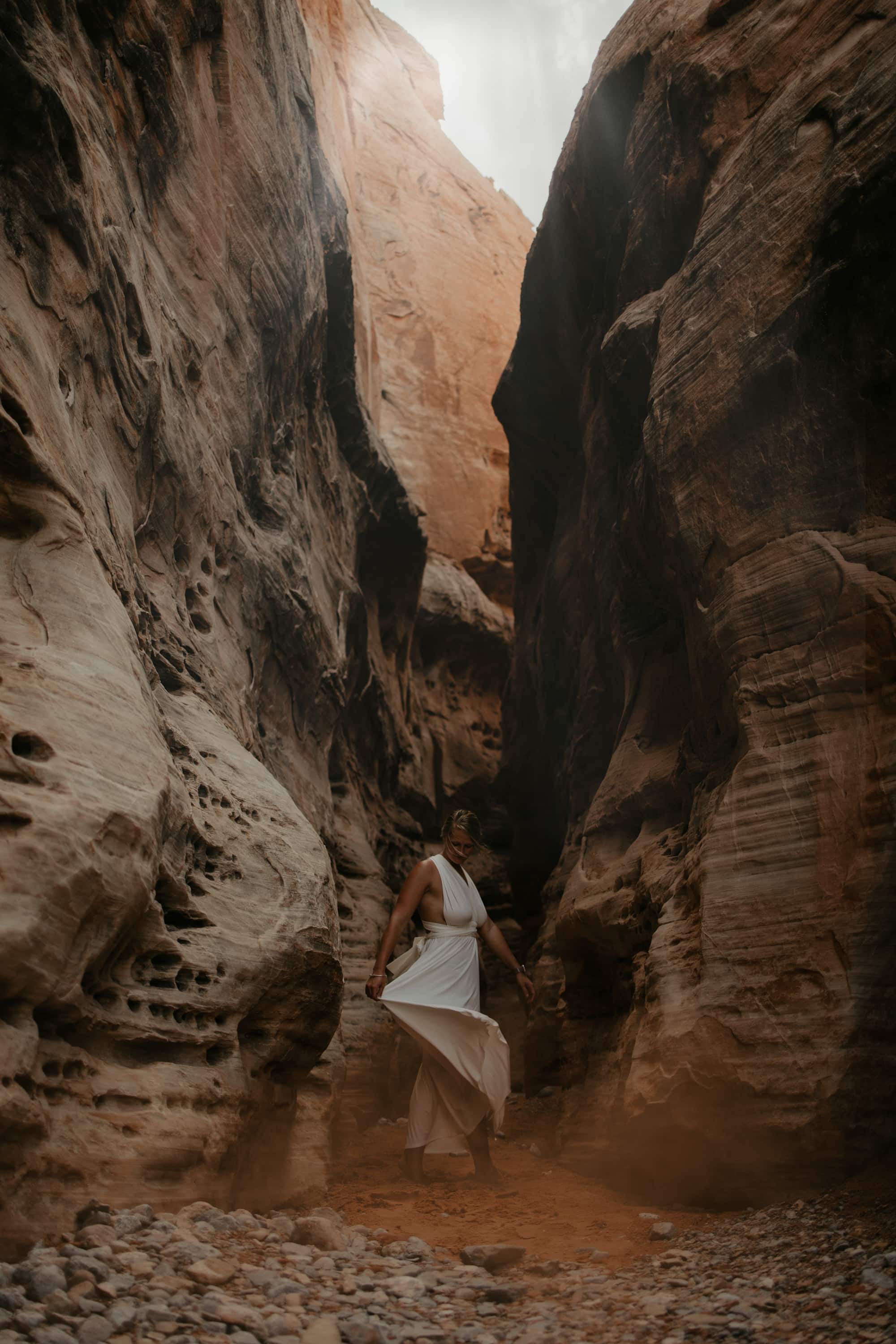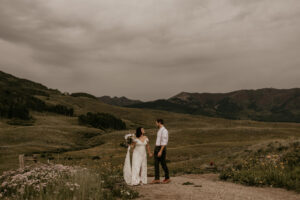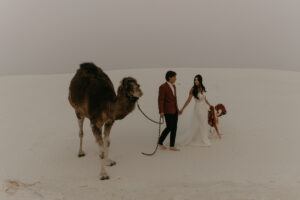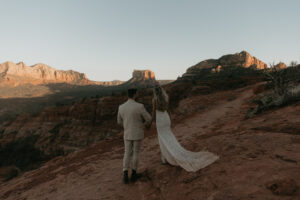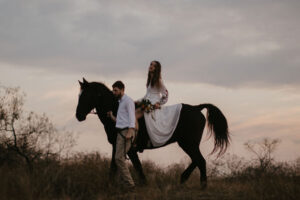Sunrise, Sunset, and prime photoshoot lighting
If you ask any photographer about key aspects in planning their sessions, a few things come to mind: location, posing, connection, and *drumroll*… LIGHT.
As much as we love the sun when it’s shining, it makes for the best photos when the light is softer at dusk and dawn. Most photographers prefer this rather than the harsh shadows that midday typically brings. Sunrise and sunsets are often a photographer’s favorite part of the day.
Seeing a sky painted with color makes for such a beautiful time of day, and we don’t often catch it to fully appreciate it! Because of the beauty of this moment, it can be a wonderful starting point for creating a wedding timeline. Planning a first look, a romantic photoshoot, or your wedding vows will be especially gorgeous when you consider working around the time of day based on your surroundings and location.
Have you heard of “golden hour”? This is the hour where the sun is at the lowest point in the sky. It is mostly known before sunset, but it actually happens twice every day. For about an hour before the sun drops below the horizon, as well as an hour after the sun rises, the light creates a beautiful glow to your skin, taking away the harshest midday shadows. For about ten to fifteen minutes after the sun goes down, there is a lesser known “blue hour,” which brings another aspect of dreamy soft light. The exact time on the clock that this occurs will depend on the date you are planning for, and sun tracking can be used to plan your timeline in advance. There are benefits to both sunrise, and sunset, so which would you prefer?
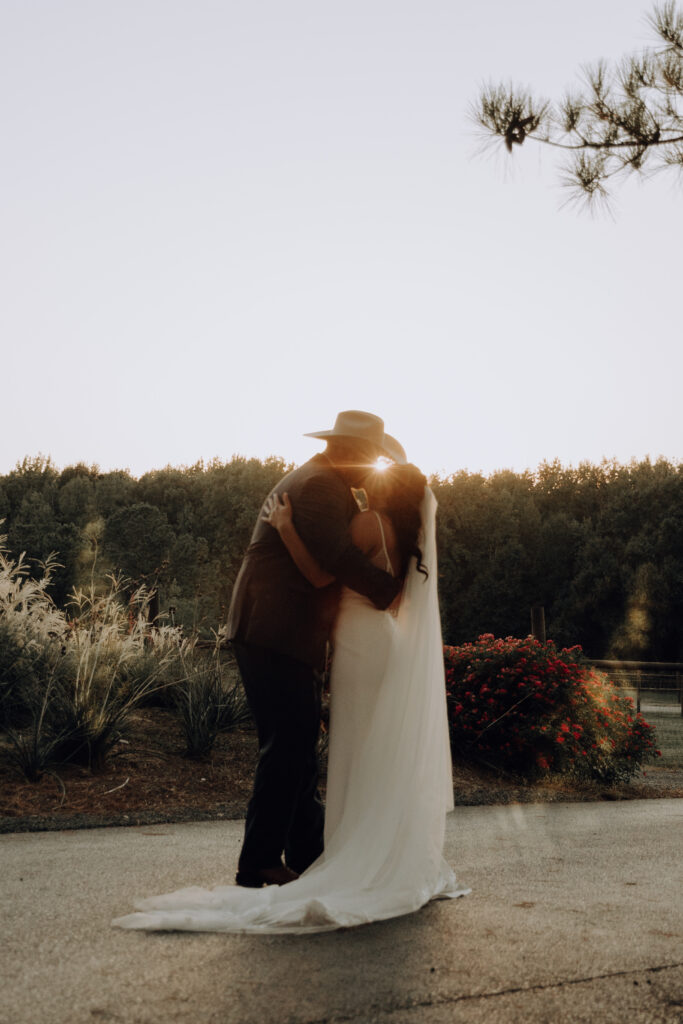
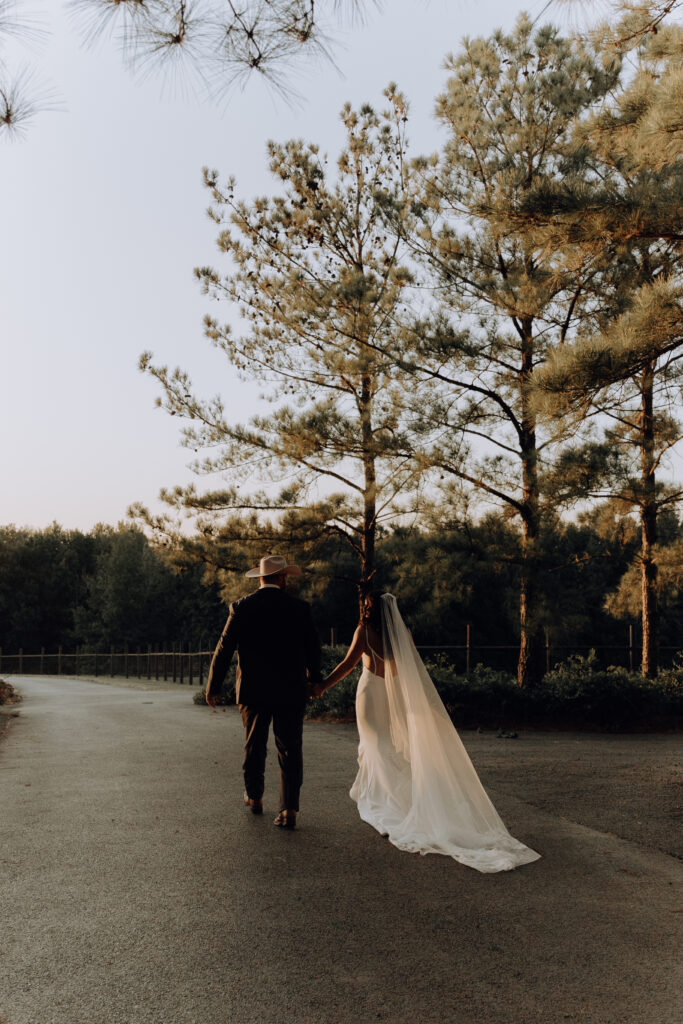
The Progression of Light
The first thing about understanding the progression of lighting during the sunset. When we first start to notice that the sun is setting, we call it “Golden Hour.” This is because as the sun hangs low in the sky, it saturates everything we are seeing with a gold hue. The world looks tinted orange, and it makes our skin glow beautifully as the light matches the undertones of our skin. This typically lasts for about 30 minutes to 1 hour before the sun actually dips below the horizon.
In mountainous regions, the next phase of the sunset is Alpenglow. Right as the sun dips past the horizon, the last rays of light reach the tallest part of the horizon opposite it— the mountains on east-facing locations at sunset. There is about a ten minute span where the mountains glow pink with the drips of light left in the sky as the sun sinks past our horizon. In some locations and seasons where the days are super long (such as summer in Alaska or Norway) this phenomenon might last a little bit longer than the typical 10 minute span.
Next, the warm saturation seems to melt from the sky and the gold hue leaves us for a cool blue. This is a lesser known sunset phase that we call “Blue Hour.” There is still light in the sky, it hasn’t become completely dark yet, but there is a blue saturation to what we see. It is a shorter time than golden hour, lasting for a total of around 20 minutes on average. Photos often end up looking much more dramatic, contrasting with our warm skin with rich, dark blues.
While writing all of these, I mentioned them in the frame of a setting sun, but each of these actually happen twice a day. At sunrise, the order is reversed, but each will still occur.
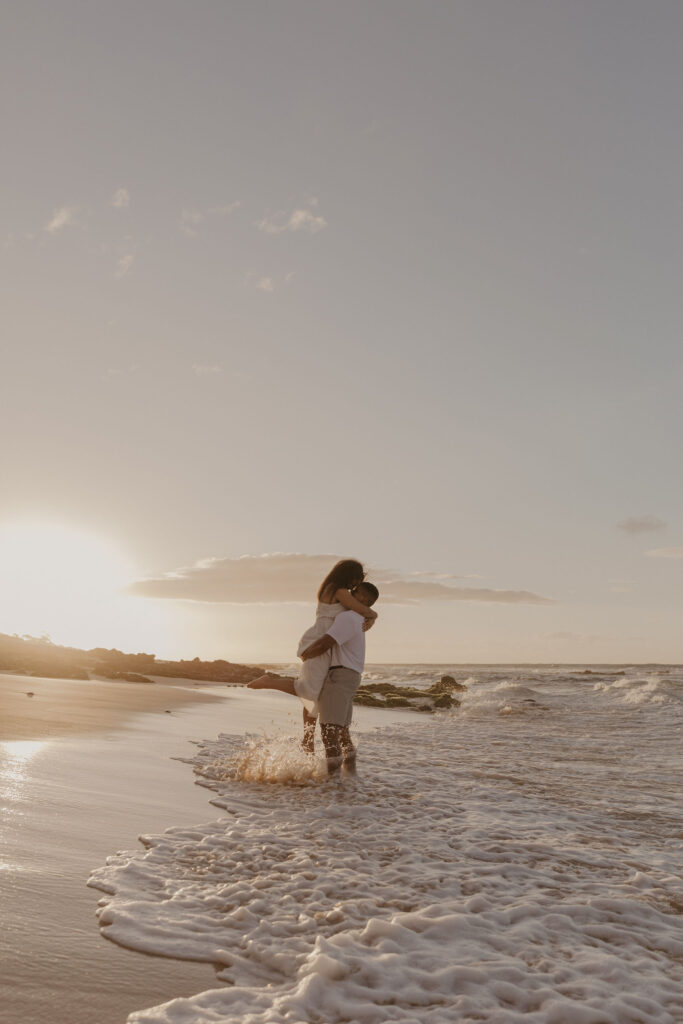

Perks of a Sunrise Photoshoot or Wedding Ceremony
With sunrise sessions, the early wakeup call will typically provide the most seclusion and privacy in well-known areas. Many trails will be busier at any given time from midday to sunset.
Starting your adventure at dawn will offer cooler temperatures in hot climates. If you are wearing heavy clothes in summer months (including wedding attire), this can make for a more comfortable day.
Sunrise offers one-of-a-kind views every morning, and gives you an epic start to the day that we rarely catch. This opens up the rest of the day for any activities that you could dream of.
Perks of a Sunset Photoshoot or Wedding Ceremony
Of course, sleeping in can be enticing. Not everyone is a morning person, so for some a 4 am wakeup call can be a little daunting on a big day. Sunset will give you the chance to sleep in and start your day as slowly as you’d like.
Seclusion is still possible during sunset, as many people leave to grab dinner, or to avoid hiking in the dark. When considering this, be aware that there are trails or locations that are specifically known for sunsets. This may cause these areas to be exceptionally busy.
Watching the sunset can lead right into stargazing, cozying up around a campfire, or various other night activities that can make for a perfect ending to a beautiful day.

So what do you think, would you wake up at 4:00 AM for a magical sunrise, or say your vows at 9:00 PM on a summer night and stargaze until you fall asleep?
I have a whole post on How to Plan Your Elopement Timeline — PLUS: Custom timeline planning and suggestions are included in all of my elopement packages!
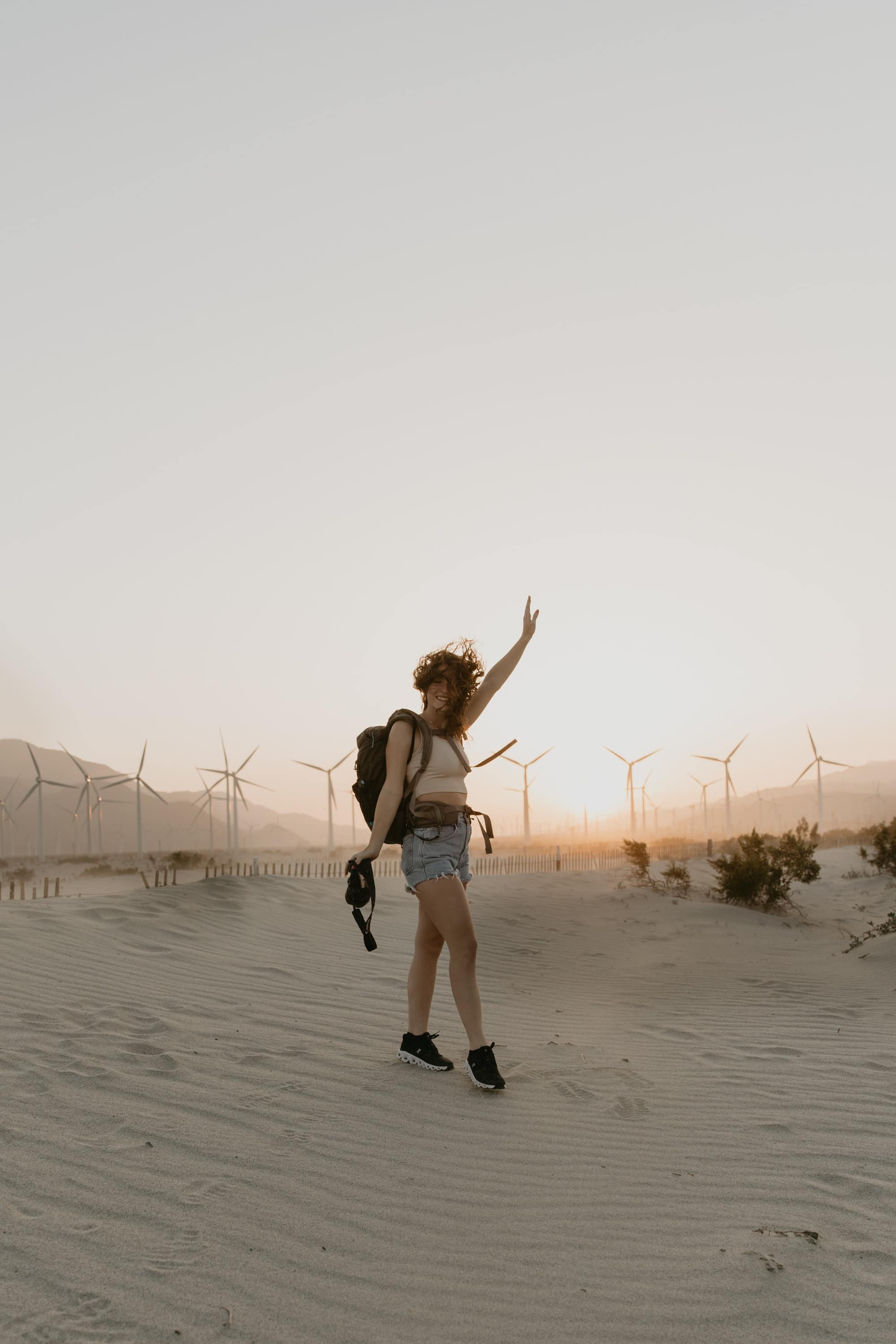
Ready to start planning your photoshoot?
I’m McKenna, an destination elopement and couple’s photographer.
Not only do I tag along to document elopements through photography, but I also help guide in planning and creating each of my couple’s unique elopement days along the way.
I would be honored to capture these beautiful memories for you. CONTACT ME today and let’s dive into planning your elopement!


